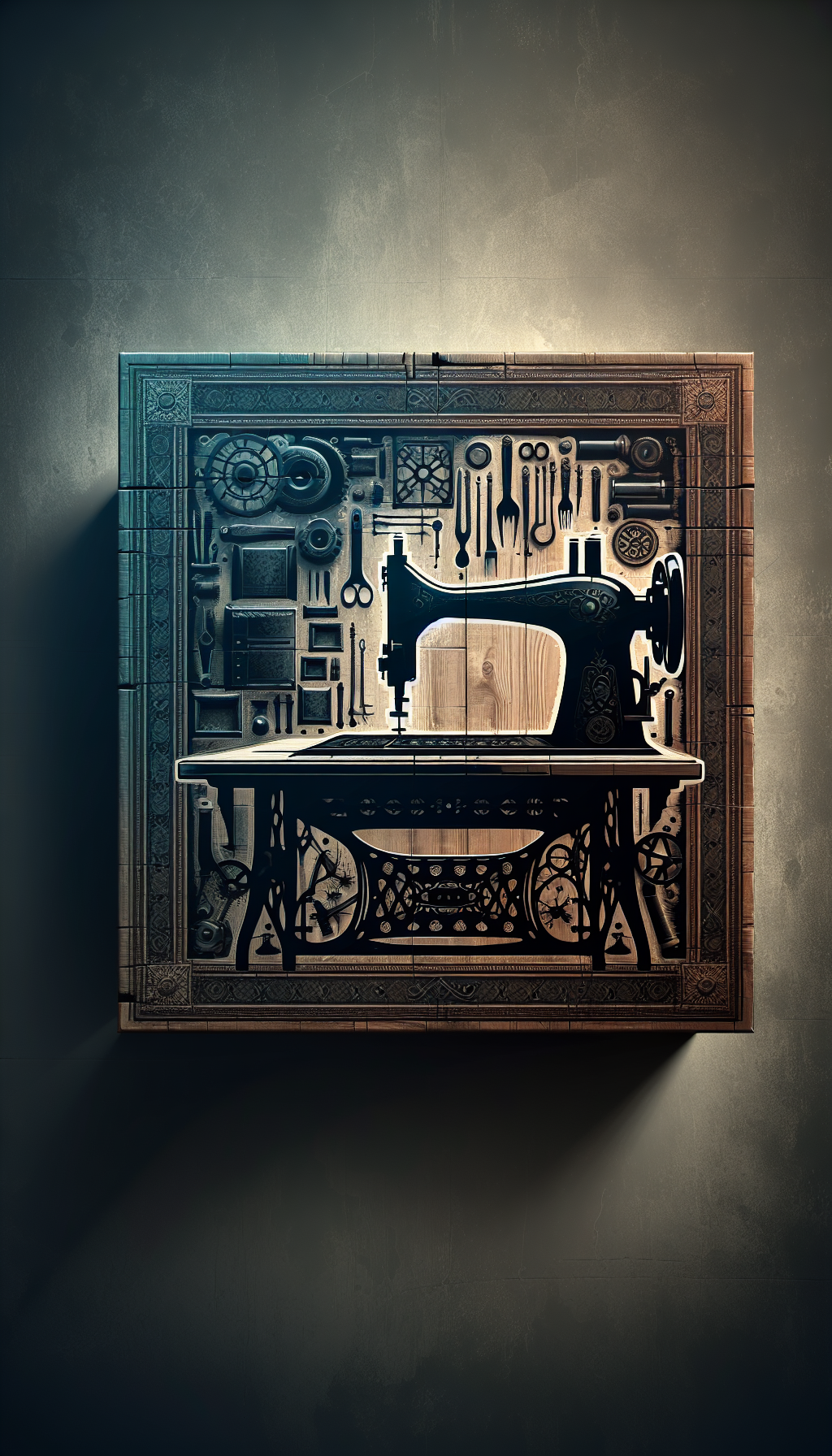J D Castro 1908 1994
Collectors and appraisers occasionally encounter works signed “J. D. Castro” with the life dates “1908–1994” noted on a label, verso inscription, or catalog entry. Documentation for this maker is sparse in mainstream reference sources, and the surname “Castro” appears across multiple regions and mediums in the 20th century, increasing the risk of conflated attributions. This guide organizes what to look for, how to verify, and how to appraise objects attributed to J. D. Castro without overstating claims.
What we can responsibly say—and how to verify it
- The label “1908–1994” reads as life dates: born 1908, died 1994. These may have been supplied by a gallery, auction house, or prior owner rather than drawn from a primary biographical source.
- The initials “J. D.” and surname “Castro” are not unique. Multiple artists, designers, and metalsmiths in Spain, Latin America (notably Mexico and Cuba), the Philippines, and the U.S. used similar names or marks during the mid‑to‑late 20th century.
- For appraisal purposes, treat “J. D. Castro (1908–1994)” as a working attribution pending evidence. Your aim is to assemble corroboration from inscriptions, provenance, technique, and comparable market records.
Verification avenues:
- Look for primary documentation: exhibition catalogs, artist files, obituaries, institutional collection attributions, or contemporaneous press. Estate papers and gallery stock books are especially useful when available.
- Read every inscription: verso titles, sitter names, dates, inventory numbers, and addresses often locate the artist in a city or region and anchor a chronology.
- Cross‑check the language and date format of inscriptions. Spanish spellings or date formats (e.g., “8-IX-53” or “México, D.F.”) can help prevent conflating with similarly named artists elsewhere.
- Do not rely on one secondary label. If the only source of “1908–1994” is a recent tag, treat it as unconfirmed until you find independent support.
Signatures, marks, and inscriptions to look for
Paintings and works on paper:
- Placement: most hand‑signed works will carry a signature in the lower right or lower left; titles and dates may appear verso or on a stretcher bar.
- Variants to document: “J. D. Castro”, “J.D. Castro”, “J·D· Castro”, “J D Castro”, or a monogram “JDC” accompanying the surname “Castro.”
- Hand characteristics: pressure, slant, letter joins (notably the form of “J”, the spacing after the initial, and whether the “t” in Castro is crossed with a long horizontal stroke). Photograph and compare across pieces.
- Date conventions: painted dates may appear as two‑digit years (“’53”) or full years. Confirm that the paint forming the date is coeval with the paint layer beneath, not floating above a varnish.
Prints:
- Pencil signatures: examine whether the signature is in graphite along the lower margin, often accompanied by edition numbers (e.g., “12/50”). Check for plate marks in intaglio prints and watermark presence in the sheet.
- Edition annotations: “prueba de artista,” “P/A,” or “H.C.” indicate proof impressions. Record any printer’s chop or blindstamp.
Metalwork and jewelry (if you encounter “Castro” in silver):
- Hallmarks vs signatures: silver objects are more often stamped than hand‑signed. Look for “CASTRO,” “JDC,” or partial initial stamps.
- Assay and origin marks: Mexican modernist silver frequently bears “MEXICO” or “TAXCO,” “925” or “STERLING,” and mid‑century “Eagle” assay marks with a number. These are workshop and region identifiers, not proofs of authorship by a specific J. D. Castro.
- Construction: hand‑forged elements, stone settings typical of Taxco production, and screw‑back vs post findings provide date clues.
Labels and framing:
- Gallery labels: note the gallery name, address, stock number, and typography. A period label linking “J. D. Castro” to a specific city is strong evidence.
- Framing materials: oxidized tacks, pre‑acid‑free mats, or 1950s–70s profile mouldings coincide with mid‑20th‑century production.
Document any inconsistency between a claimed date and the materials visible in the work or frame.
Media and subjects encountered in the market
Because “J. D. Castro” is not uniquely identifiable without context, start by categorizing the object’s medium and subject matter before leaping to biography.
Paintings (oil or acrylic):
- Subjects: regional landscapes, harbor scenes, costumbrista genre scenes, portraits, or modernist abstractions are typical of the 1930s–1970s across Iberian and Latin American schools.
- Supports: expect cotton or linen canvas, board, or masonite. A tropical hardwood panel suggests a Latin American origin; a UK‑marked board points elsewhere.
- Grounds and technique: underdrawing visible by raking light, palette‑knife impasto, or thin scumbles can help cluster works by the same hand.
Works on paper:
- Watercolor and gouache: sun‑fade and mat burn are common. Check for graphite guidelines beneath watercolor signatures.
- Prints: lithographs and etchings circulated widely. Editioned prints with a consistent pencil hand across multiple impressions provide more secure attribution than a lone painting with a later‑added signature.
Decorative arts and silver:
- If you are handling silver marked “Castro,” approach as workshop identification first. Compare construction techniques, hinge and clasp types, and stone choices with known Taxco or other regional workshops from the period.
The key is to build an internal dossier of stylistic and technical traits that repeat across pieces with similar “J. D. Castro” inscriptions.
Building comparables and understanding the market
When the artist’s biography is thin, comparables (comps) take on outsized importance. Focus on quality, attribution language, and provenance.
How to assemble comps:
- Gather auction and dealer records for items specifically cataloged as “J. D. Castro” and note whether they are listed as “attributed to,” “school of,” or “circle of.” The language used correlates with price and confidence.
- If exact‑name comps are scarce, widen your search by:
- Region and period: mid‑20th‑century Spanish, Mexican, or Cuban painters with similar subjects and technique.
- Medium and scale: an oil on canvas 24 x 36 inches by a regional 20th‑century artist will not price like a small print; keep comps consistent in medium and size.
- Provenance: works with period gallery labels, exhibition history, or original invoices perform better.
- Track whether prices are for framed works or unframed, and whether condition issues were disclosed.
Interpreting results:
- Expect a broad spread for lesser‑documented artists. Works with strong, verifiable provenance will command multiples over similar but weakly documented pieces.
- Signature‑only attributions without corroborating traits sell at discounts versus firmly attributed works with documented exhibition history.
- For silver or design objects, workshop attribution strength (clear hallmark sequence, known pattern) drives value more than the presence of a surname alone.
Avoid over‑weighting a single outlier price; prioritize clusters of sales with similar attributes and cataloging language.
Authentication, examination, and condition
A disciplined technical review reduces attribution risk and supports value.
Technical exam:
- Layer analysis: under magnification, check whether the paint of the signature is integrated within the craquelure pattern of the surface. A signature on top of aged varnish is a red flag.
- Supports and hardware: stretcher types, nail/tack oxidation, and panel laminates should be consistent with a mid‑20th‑century object.
- Paper: examine fiber with transmitted light; machine‑made wove sheets with optical brighteners indicate later paper. Look for watermarks and plate tone in intaglio prints.
- Silver: test with a conservative acid or XRF when possible; confirm that a “925” stamp is not spurious and that construction methods match the purported era.
Provenance:
- Assemble a chain of ownership. Even a modest sequence—artist’s studio to regional gallery to family descent—greatly increases confidence.
- Preserve and photograph all labels, inscriptions, and receipts. Note dates, inventory codes, and addresses.
Condition:
- Paintings: overcleaning, harsh relining, or extensive overpaint depress value. UV light will reveal retouches; document them.
- Works on paper: mat burn, foxing, and over‑bleached sheets lower desirability. Retain original margins on prints when possible.
- Silver: aggressive machine buffing erases tool marks and maker’s stamps. Surface wear is acceptable; obliterated marks are not.
Conservation:
- Use reversible, period‑appropriate treatments. Keep treatment reports; they support transparency in future sales or appraisals.
Cataloging language that protects value
Use precise cataloging to reflect your confidence level:
- Signed J. D. Castro (lower right), dated 1956; title inscribed verso; oil on canvas.
- Attributed to J. D. Castro (1908–1994); watercolor on paper; monogrammed lower left.
- Workshop of Castro; Taxco; sterling silver bracelet; marked “TAXCO 925,” eagle mark; 1950s.
Avoid unqualified assertions without evidence. When revising prior labels, retain originals and note the change in your report.
Common pitfalls and how to avoid them
- Conflation with similarly named makers: Distinguish “Castro” from “Castillo” in Mexican silver; do not assign a jewelry hallmark to a painter or vice versa without corroboration.
- Over‑reliance on recent labels: A neat, modern typewritten label with life dates is not proof. Seek period documents.
- Misread signatures: Flourished “C” and long t‑crosses can turn “Castro” into “Cestro” or “Catro” in hasty reading; always compare across examples.
- Ignoring frame and materials: A “1940s” painting in a clearly 1980s commercial frame with no earlier evidence suggests either later framing or later additions—investigate.
- Under‑documenting: Failing to photograph stamps, edges, and under‑frame evidence leaves money on the table; thorough documentation strengthens both appraisal and sale.
Practical appraisal checklist
- Identify the medium and support (oil on canvas, watercolor on paper, silver with hallmarks, etc.).
- Photograph signatures, inscriptions, labels, and all marks in macro.
- Record measurements, image size vs framed size, and weight (for metalwork).
- Note date formats, language, and any geographic references in inscriptions.
- Examine construction and materials for era consistency; use UV and raking light.
- Map provenance: list prior owners, galleries, sale dates, and any paperwork.
- Build comps by medium, scale, attribution confidence, region, and subject.
- Write cataloging language that mirrors your confidence (“signed,” “attributed,” “workshop of”).
- Flag condition issues and any conservation; obtain or create treatment notes.
- Keep all original labels, frames, and packaging with the object when feasible.
FAQ
Q: What do the dates 1908–1994 signify? A: They are likely intended as life dates for the artist. Unless they appear in a primary source (obituary, authoritative catalog, institutional biography), treat them as unverified and seek independent corroboration.
Q: Is J. D. Castro related to the well‑known Mexican workshop Los Castillo? A: No. “Castro” and “Castillo” are distinct surnames. Confusion is common in mid‑century silver. Verify hallmarks and workshop stamps before assuming any relationship.
Q: How can I tell if a signature was added later? A: Under magnification, added signatures often sit atop varnish, lack integration with craquelure, and differ in pigment/hand from the main work. A solvent‑swab test by a conservator can confirm whether the signature lies in a different layer.
Q: Should I reframe or polish before appraisal? A: No. Present the object as found. Over‑polishing silver and aggressive reframing can remove evidence (labels, tool marks) that supports attribution and value. Any conservation should be reversible and documented.
Q: There are very few auction records for J. D. Castro. How do I estimate value? A: Build a structured set of comparables by medium, region, period, subject, and attribution confidence. Weight comps with stronger provenance and similar scale. Explain the limitations of the data in your report and avoid over‑precision in ranges when evidence is thin.
By hewing to method—careful technical examination, disciplined cataloging, and cautious use of comps—you can appraise works attributed to J. D. Castro (1908–1994) credibly, even amid limited biographical data.



